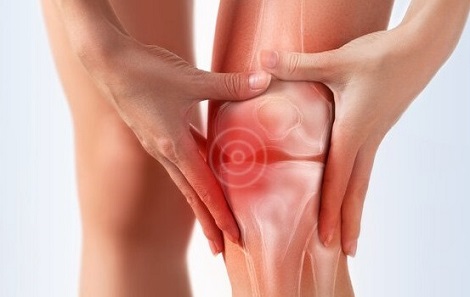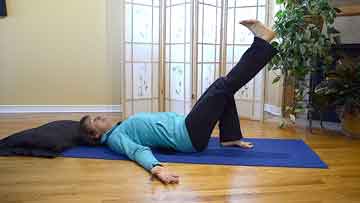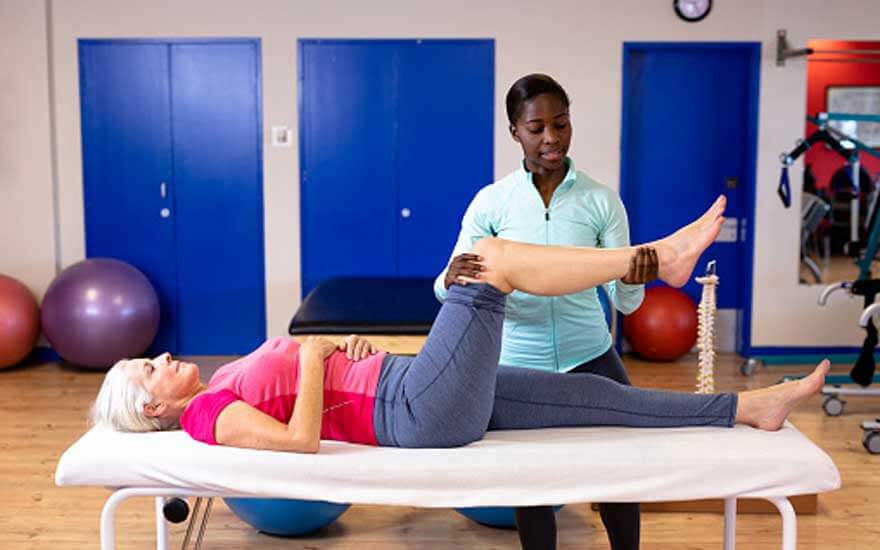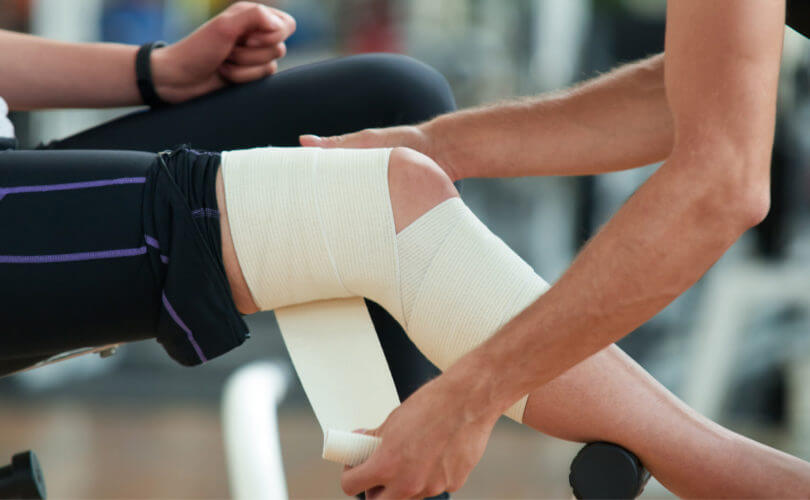Do you struggle with joint pain or stiffness? Are you looking to improve your flexibility and mobility? If so, you may benefit from joint flexibility mastery through physical therapy.

by Jared Rice (https://unsplash.com/@jareddrice)
Joint flexibility is essential for everyday movements and activities, and it can greatly impact your overall quality of life. In this article, we will explore the importance of joint flexibility, the benefits of physical therapy for joint flexibility mastery, and some exercises and techniques to help you improve your flexibility.
Joint flexibility is not only important for physical health but also for mental well-being. Studies have shown that increased joint flexibility can lead to reduced stress levels and improved mood. By incorporating physical therapy into your routine, you can not only enhance your physical performance but also experience a positive impact on your overall quality of life. So, don’t underestimate the power of joint flexibility mastery through physical therapy – it’s not just about movement, it’s about holistic well-being.
Why Is Joint Flexibility Important?
Joint flexibility refers to the range of motion in your joints, or the ability to move your joints freely and without pain. It is crucial for everyday activities such as walking, bending, and reaching, as well as more complex movements like sports and exercise.
Having good joint flexibility can also help prevent injuries and improve overall physical performance. On the other hand, limited joint flexibility can lead to pain, stiffness, and difficulty performing daily tasks.
Physical therapy is a collaborative process between the patient and the physical therapist, focusing on achieving specific goals related to joint flexibility and overall well-being. Through regular sessions and consistent effort, individuals can see significant improvements in their joint mobility, pain levels, and quality of life. The guidance and expertise provided by a physical therapist can make a profound difference in helping individuals unlock the secrets of joint flexibility mastery.
The Role of Physical Therapy in Joint Flexibility Mastery
Physical therapy is a form of treatment that focuses on improving mobility, function, and quality of life through exercises and techniques. It can be beneficial for individuals of all ages and fitness levels, and it can help with a variety of conditions, including joint pain and stiffness.
Physical therapists are trained professionals who can assess your joint flexibility and create a personalized treatment plan to help you achieve joint flexibility mastery. They can also provide guidance and support to help you reach your goals and prevent future injuries.
Benefits of Physical Therapy for Joint Flexibility Mastery

by madison lavern (https://unsplash.com/@yogagenapp)
Physical therapy offers numerous benefits for joint flexibility mastery, including:
- Improved range of motion: Physical therapy exercises and techniques can help increase your joint flexibility and improve your range of motion.
- Pain relief: Joint pain and stiffness can be reduced through physical therapy, allowing you to move more comfortably and freely.
- Injury prevention: By improving joint flexibility, physical therapy can help prevent injuries and improve overall physical performance.
- Personalized treatment: Physical therapists can create a personalized treatment plan based on your specific needs and goals, ensuring that you receive the best care possible.
Exercises and Techniques for Joint Flexibility Mastery
Physical therapy for joint flexibility mastery may include a variety of exercises and techniques, depending on your individual needs and goals. Here are some examples of exercises and techniques that may be included in your treatment plan:
Stretching Exercises
Stretching is a crucial component of joint flexibility mastery. It can help improve range of motion, reduce stiffness, and prevent injuries. Some common stretching exercises for joint flexibility include:
- Shoulder rolls: Stand with your feet shoulder-width apart and your arms relaxed at your sides. Slowly roll your shoulders forward, up, back, and down in a circular motion. Repeat 10 times, then reverse the direction.
- Hamstring stretch: Sit on the floor with your legs extended in front of you. Slowly reach forward and try to touch your toes. Hold for 30 seconds, then relax. Repeat 3 times.
- Quadriceps stretch: Stand facing a wall or chair for support. Bend one knee and bring your heel towards your buttocks. Hold onto your ankle with your hand and gently pull your heel closer to your buttocks. Hold for 30 seconds, then switch legs.
Joint Mobilization Techniques
Joint mobilization is a hands-on technique used by physical therapists to improve joint flexibility. It involves applying gentle pressure and movement to the affected joint to help increase range of motion and reduce pain. Some common joint mobilization techniques include:
- Passive range of motion: The physical therapist moves your joint through its full range of motion without any effort from you.
- Active-assisted range of motion: You actively move your joint while the physical therapist provides assistance and support.
- Joint distraction: The physical therapist gently pulls or separates the joint surfaces to help improve joint mobility.
Strengthening Exercises
Strengthening exercises can also help improve joint flexibility by increasing muscle strength and stability. Some examples of strengthening exercises for joint flexibility include:
- Wall push-ups: Stand facing a wall with your arms extended in front of you. Slowly bend your elbows and lower your chest towards the wall. Push back up to the starting position. Repeat 10 times.
- Leg lifts: Lie on your back with your legs extended. Slowly lift one leg off the ground, keeping your knee straight. Hold for 5 seconds, then lower your leg. Repeat 10 times, then switch legs.
- Resistance band exercises: Resistance bands can be used to strengthen various muscle groups, including those that support your joints. Your physical therapist can recommend specific exercises based on your needs and goals.
- Strengthening Muscles to Support Joint Flexibility: Enhance the stability and functionality of your joints, leading to better overall joint flexibility
Tips for Joint Flexibility Mastery
In addition to physical therapy exercises and techniques, there are some things you can do on your own to improve joint flexibility and maintain it over time. Here are some tips to help you achieve joint flexibility mastery:
- Stay active: Regular physical activity can help improve joint flexibility and prevent stiffness. Aim for at least 30 minutes of moderate exercise, such as walking or swimming, each day.
- Practice good posture: Poor posture can lead to joint pain and stiffness. Be mindful of your posture throughout the day and make adjustments as needed.
- Use proper form during exercise: When participating in sports or exercise, be sure to use proper form to avoid injury and improve joint flexibility.
- Listen to your body: If you experience pain or discomfort during physical activity, stop and rest. Pushing through the pain can lead to further injury and hinder your progress towards joint flexibility mastery.

by Wesley Tingey (https://unsplash.com/@wesleyphotography)
Final Thoughts
Joint flexibility plays a key role in our daily activities, whether it’s bending down to tie our shoes or reaching up to grab something from a high shelf. It is a fundamental aspect of our overall quality of life, affecting how easily we can move and perform various tasks. Fortunately, physical therapy provides a range of benefits to help individuals enhance their joint flexibility. These benefits can include an increase in range of motion, reduced pain levels, and a decreased risk of sustaining injuries related to joint stiffness. By diligently practicing the exercises and techniques prescribed by your physical therapist, as well as implementing the following tips, you can work towards mastering joint flexibility and experience an improvement in your physical health and well-being.
When it comes to achieving joint flexibility mastery, regular exercise is a key component. Engaging in a variety of stretches and strengthening exercises can help to improve the range of motion in your joints and alleviate any discomfort you may be experiencing. In addition, incorporating activities such as yoga or Pilates into your routine can also be beneficial for enhancing flexibility and building strength. These practices focus on increasing flexibility in a gentle and controlled manner, making them ideal for individuals looking to improve their joint mobility. By consistently dedicating time to these exercises and activities, you can make noticeable progress in your joint flexibility and overall physical health.
Incorporating proper nutrition into your daily regimen is another crucial factor in achieving joint flexibility mastery. Consuming a well-balanced diet rich in vitamins and nutrients can support the health of your joints and connective tissues, helping to reduce inflammation and promote flexibility. Foods that are high in antioxidants, such as fruits and vegetables, can aid in protecting your joints from damage and maintaining their flexibility. Additionally, staying hydrated by drinking an adequate amount of water each day can also contribute to improved joint health. By fueling your body with the proper nutrients and staying hydrated, you can support your efforts to enhance your joint flexibility and overall well-being.




